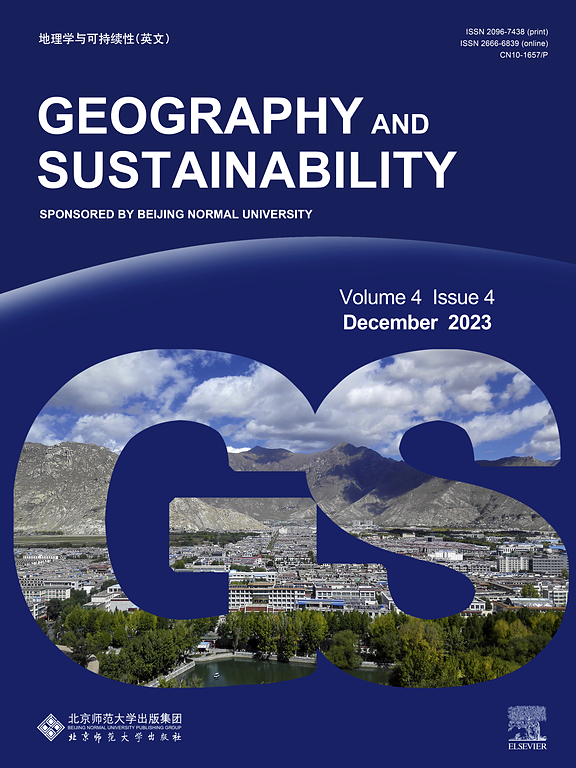Mapping and modelling impacts of tobacco farming on local higher plant diversity: A case study in Yunnan Province, China
IF 8
1区 环境科学与生态学
Q1 GEOGRAPHY, PHYSICAL
引用次数: 0
Abstract
The rapid expansion of tobacco farming poses a significant threat to biodiversity in Yunnan Province, China, a region known for its rich biodiversity. This study aims to understand the trade-offs between tobacco farming and higher plant species diversity, and to identify priority counties for conservation. We employed an integrated approach combining species distribution modeling, GIS overlay analysis, and empirical spatial regression to empirically assess the impact of tobacco farming intensity on biodiversity risk. Our findings reveal a compelling negative spatial correlation between tobacco farming expansion and higher plant species diversity. Specifically, southern counties in Wenshan and Honghe prefectures are major priority areas of conservation that exhibit significant spatial correlations between biodiversity risks and high tobacco farming intensity. Quantitatively, at county level, a 1 % increase in tobacco farming area corresponds to a 0.094 % decrease in endemic higher plant species richness across the entire province. These results underscore the need for targeted and region-specific regulations to mitigate biodiversity loss and promote sustainable development in Yunnan Province. The integrated approach used in this study provides a comprehensive assessment of the tobacco-biodiversity trade-offs, offering actionable insights for policymaking.

烟草种植对当地高等植物多样性的影响:以云南省为例
烟草种植的迅速扩张对以生物多样性丰富而闻名的中国云南省的生物多样性构成了重大威胁。本研究旨在了解烟草种植与更高植物物种多样性之间的权衡,并确定优先保护的县。采用物种分布建模、GIS叠加分析和空间回归相结合的方法,对烟草种植强度对生物多样性风险的影响进行了实证分析。我们的研究结果揭示了烟草种植扩张与更高的植物物种多样性之间令人信服的负空间相关性。其中,文山州和红河州南部县是重点保护区域,生物多样性风险与高烟草种植强度之间存在显著的空间相关性。从数量上看,在县一级,烟草种植面积每增加1%,全省特有的高等植物物种丰富度就会减少0.094%。这些结果强调了制定有针对性的区域法规以减轻云南省生物多样性丧失和促进可持续发展的必要性。本研究中使用的综合方法提供了烟草与生物多样性权衡的综合评估,为政策制定提供了可行的见解。
本文章由计算机程序翻译,如有差异,请以英文原文为准。
求助全文
约1分钟内获得全文
求助全文
来源期刊

Geography and Sustainability
Social Sciences-Geography, Planning and Development
CiteScore
16.70
自引率
3.10%
发文量
32
审稿时长
41 days
期刊介绍:
Geography and Sustainability serves as a central hub for interdisciplinary research and education aimed at promoting sustainable development from an integrated geography perspective. By bridging natural and human sciences, the journal fosters broader analysis and innovative thinking on global and regional sustainability issues.
Geography and Sustainability welcomes original, high-quality research articles, review articles, short communications, technical comments, perspective articles and editorials on the following themes:
Geographical Processes: Interactions with and between water, soil, atmosphere and the biosphere and their spatio-temporal variations;
Human-Environmental Systems: Interactions between humans and the environment, resilience of socio-ecological systems and vulnerability;
Ecosystem Services and Human Wellbeing: Ecosystem structure, processes, services and their linkages with human wellbeing;
Sustainable Development: Theory, practice and critical challenges in sustainable development.
 求助内容:
求助内容: 应助结果提醒方式:
应助结果提醒方式:


